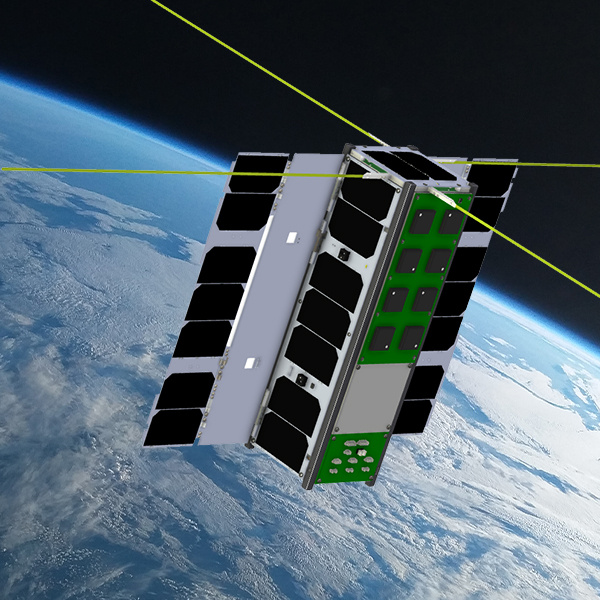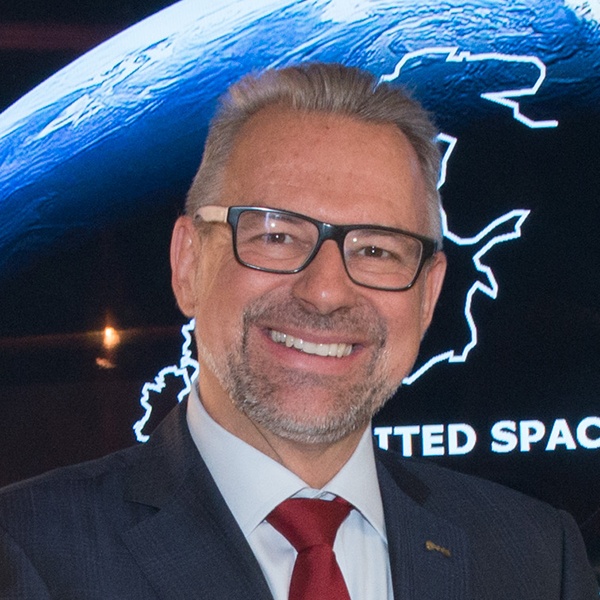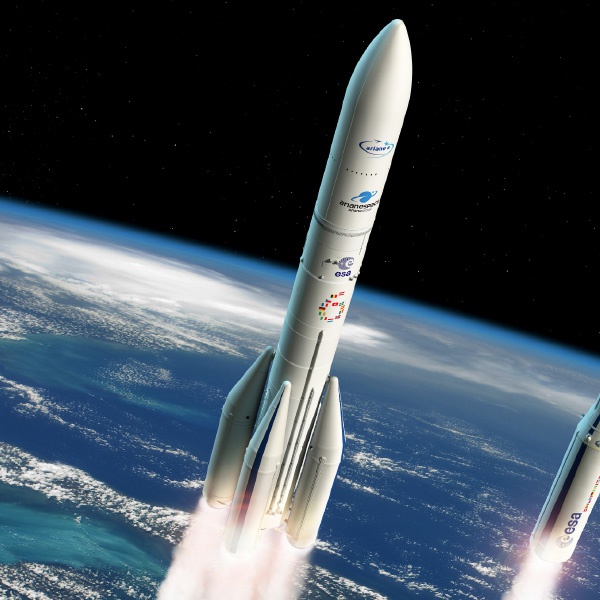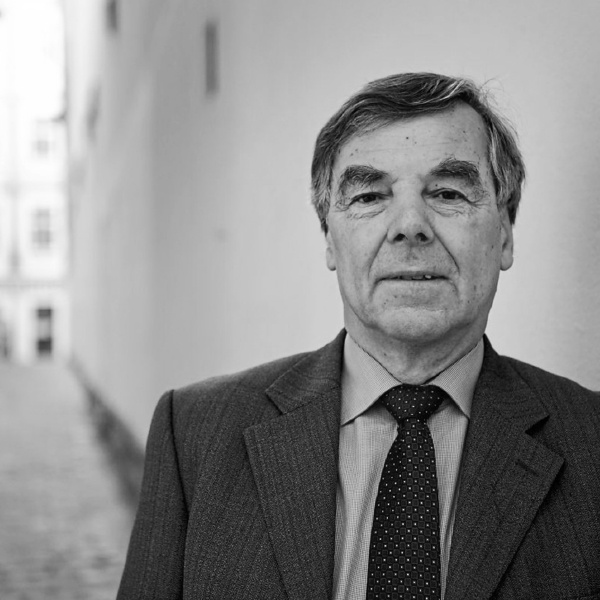ESA-Experte:
„Jede Mission ist zu Beginn Science-Fiction“
(Interview von: STANDARD Verlagsgesellschaft, Karin Krichmayr, 25.12.2018)
Mars-Express-Missionsleiter Rudolf Schmidt über seine Mitarbeit bei Ridley Scotts „Der Marsianer“, Systemfehler und Menschen auf dem Mars.
Weil bei der Inskription am wenigsten Leute beim Schalter für Physik anstanden, entschloss sich Rudolf Schmidt kurzerhand für dieses Fach. Er sollte es nicht bereuen: Ab 1982 arbeitete er bei der europäischen Raumfahrtagentur ESA, wo er u.a. die Mission Mars Express leitete und zuletzt als Generalinspektor tätig war. Aufgrund seiner Expertise holte ihn US-Regisseur Ridley Scott als Berater für die Dreharbeiten seines Hollywoodfilms „Der Marsianer“ (2015) an Bord. Seit er 2016 in den Ruhestand getreten ist, bastelt er statt Satelliten an seinem Bauernhof in der Steiermark. Vergangene Woche war er in Wien zu Gast beim Symposium „Kepler und der rote Planet“ der Österreichischen Akademie der Wissenschaften.
Am 25. Dezember 2003 erreichte die Sonde Mars Express den Orbit des Roten Planeten. Wie haben Sie Weihnachten verbracht?
SCHMIDT Heiligabend war eine brenzlige Phase. Wir haben von 24. Dezember in der Früh bis zum 25. am Abend im ESA-Kontrollzentrum in Darmstadt durchgearbeitet. Die deutsche Wissenschaftsministerin Edelgard Buhlmann kam mit Champagnerflaschen, die sie versteckte, damit sie ja nicht mit ihnen fotografiert wird, falls etwas schiefgeht. Als Mars Express dann um drei Uhr früh im Orbit war, knallten die Korken. Dabei stürmte noch ein Mathematiker herein mit der Schocknachricht, dass beim Einschuss in den Orbit viel zu viel Treibstoff verbraucht wurde. Es stellte sich aber heraus, dass er sich um eine Kommastelle verrechnet hatte. Der Treibstoff reichte also doch für 24 Jahre. Das heißt, wenn alles andere auch so lange hält, könnte Mars Express noch bis 2027 aktiv sein.
Haben Sie damit gerechnet, dass die Sonde so lange Daten liefert? Zuletzt wurden mit ihrer Hilfe riesige Wasservorkommen auf dem Mars entdeckt.
SCHMIDT Entworfen und finanziert war das Projekt für zwei Jahre, aber wie üblich in Europa, wenn ein Projekt gut läuft, findet man immer noch irgendwo Geld dafür. Die Performance des Satelliten ist gut, Datenübertragung, elektrische Leistung, die Recheneinheiten an Bord funktionieren wunderbar. Und solange daraus gute wissenschaftliche Arbeiten resultieren, geht es auch weiter.
In der Raumfahrt haben Sie nicht nur große Erfolge erlebt, sondern auch spektakuläre Flops. Ist das eine nicht ohne das andere zu haben?
SCHMIDT Es gibt Projekte, die ein Riesenerfolg wurden, aber zwischendurch knapp am Desaster vorbeigeschrammt sind. Zum Beispiel das Hubble-Space-Teleskop: Bei der Linse wurden zwei Mikron zu viel weggeschliffen, das ist etwa ein Fünfzigstel eines Haares. Das hat ausgereicht, dass die Fotos ganz deutlich unscharf waren. Zwei Jahre später ist man mit dem Shuttle hingeflogen und hat es repariert. Auch bei Mars Express gab es ein gravierendes Problem: Es fehlte eine Drahtbrücke im Satelliten. Als sich kurz nach dem Start die Sonnensegel entfalteten, war klar, dass zu wenig elektrische Leistung auf den Segeln zustande kommt, sodass der Satellit es nie bis zum Mars schaffen würde. Also begannen wir nach Lösungen zu suchen. Wir haben umgeplant, optimiert und an vielen Rädchen gedreht, bis wir Schritt für Schritt so viel Energie einsparen konnten, dass am Ende für die Messungen mehr als genug Leistung zur Verfügung stand. Jetzt ist die Sonde 15 Jahre im Marsorbit.
Abgesehen von den Erfolgen – was war der größte Fehlschlag in Ihrer Karriere?
SCHMIDT Es gibt nur einen, und der sticht heraus. Ich bin 1982 nach Holland zur ESA gekommen und wurde einige Monate später wissenschaftlicher Leiter des Clusterprojekts, das mit vier Satelliten das Erdmagnetfeld erforschen sollte. Es gab immer Geldmangel bei der ESA, irgendwo hat es immer gezwickt, also wurden immer billigere Wege gesucht. Dann endlich wurden 1996 die Satelliten nach Französisch-Guyana zum Start auf der ersten Ariane 5 geflogen. Gleich nach dem Start explodierte die Rakete. 13 Jahre Arbeit waren in 20 Sekunden kaputt. Es war ein Riesendrama, wir haben alle geweint. Das hat mir gezeigt, wie riskant unser Geschäft ist. Die Weltraumfahrt ist unverzeihlich. Wenn irgendwo eine Fehlermöglichkeit im System besteht, dann ist es nur eine Frage der Zeit, bis der Fehler tödlich wird. Bei Ariane 5 hat man Software vom Vorgänger wiederverwendet. Ariane 4 beschleunigt so gemächlich wie ein VW-Transporter, Ariane 5 ist wie ein Porsche. Die Steuerungssoftware kam damit nicht klar. Es gab dann mit Cluster 2 aber einen erfolgreichen Nachbau.
Sie haben immer mit Satelliten gearbeitet, wie stehen Sie zur bemannten Raumfahrt?
SCHMIDT Es wird Zeit, dass wir etwas anderes machen als die International Space Station. Die Amerikaner schlagen einen Lunar Gateway vor, eine bemannte Kapsel im Bereich des Mondes. Sie könnte um Lagrange-Punkte kreisen, wo es Stabilität zwischen Erd- und Mondschwere gibt, oder um den Mond selber. So ein Gateway soll der erste Schritt sein, um von dort aus weiter zum Mars zu fliegen oder zu einem Asteroiden.
Die nächste große Reise soll zum Mars gehen?
SCHMIDT Das ist die nächste große Herausforderung. Aber um das zu finanzieren, bräuchte es einen Super-Kennedy. Ich bin überzeugt, dass es technisch möglich ist, und auch geistig und körperlich sollten Astronauten eine Reise von drei Jahren hin und zurück aushalten. Heute ist es Elon Musk mit Falcon 9, der Druck macht. Am Ende wird auch Musk das Geld ausgehen, aber er könnte das Fass ins Rollen bringen. Die Regierungsbehörden NASA und ESA, Chinesen, Inder, Japaner und Russen müssten alle zusammenarbeiten. Einer allein kann so eine Mission nicht auf die Beine stellen.










































